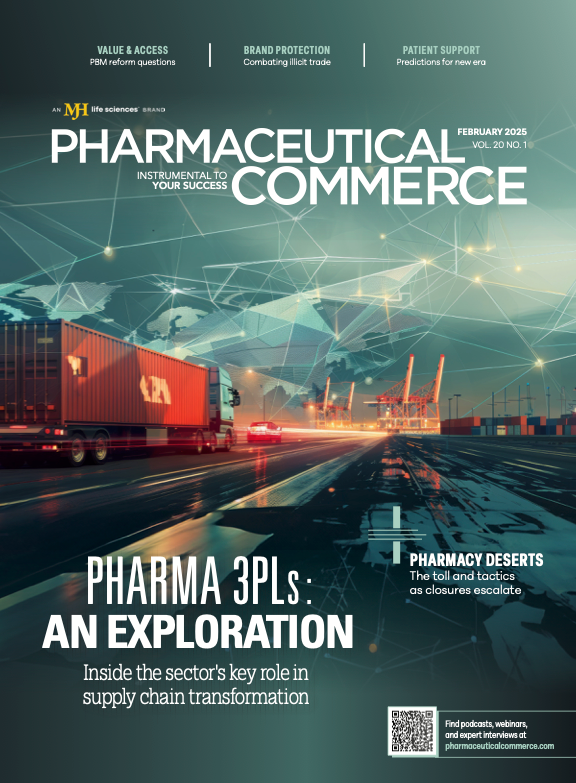Why Pharmaceutical Products Need Sustainable Packaging
One packaging aspect—the tape—is often overlooked, but is a valuable component of the shipping process.

There is a growing, widespread desire for sustainable products across industries, and the pharmaceutical sector is no exception. Patients, healthcare providers, and regulators are putting increasing pressure on pharmaceutical manufacturers to adopt environmentally friendly practices. In fact, a 2024 consumer survey by PwC1 found that 85% of respondents are seeing the impact of climate change on their lives firsthand, while 46% said they were buying more sustainable products as a way to reduce their impact on the environment. More than 80% of consumers said they were willing to pay more for these “green” products, with an average 9.7% sustainable premium, even with the rising cost-of-living and inflation.
One packaging component that is oftentimes overlooked when determining sustainable alternatives in manufacturing is tape, an essential part of packing and shipping. Tape is also a simple and seamless transition from virgin plastic to a more sustainable alternative, but consumers are paying attention. The aforementioned PwC survey also found that buyers are assessing producers' sustainability practices through tangible attributes, with 40% of those surveyed saying they pay attention to production methods and recycling, 38% to eco-friendly packaging, and 34% saying they want to know if companies are making a positive impact on nature and water conservation.
Fortunately, with new products on the market, suppliers can adjust their traditional packaging methods to utilize sustainable sealing options to meet consumer demand, while also keeping the strength and resilience they are accustomed to from their tape.
Pharmaceutical companies can benefit greatly from shifting to more sustainable packaging options. These packaging tools can have a large impact on both economic and environmental fronts.
The value of sustainable packaging in pharma
In the pharmaceutical sector, packaging plays a critical role not only in protecting products but also in maintaining compliance with strict safety regulations. Sustainable packaging—including recyclable packaging tape and packaging tapes made from 90% post-consumer recycled (PCR) polyester—offers a unique opportunity for companies to reduce their use of virgin plastic and minimize waste while ensuring the safety and security of their products during transit. As consumers and businesses alike prioritize sustainability, adopting greener packaging practices can help pharmaceutical companies enhance their brand image and bottom line while supporting their environmental goals.
Sustainable tape options
Recyclable tapes are often made from performance-grade paper and can be recycled alongside the packaging materials they seal, which significantly reduces the use of plastic in pharmaceutical packaging. This aids in the conservation of natural resources and reduces the waste footprint that is associated with the pharmaceutical industry.
Other versions of sustainable tapes are made from 90% post-consumer recycled polyester, found in PET bottles, and are aligned with moving to a more circular packaging alternative. Making the switch to a tape made from post-consumer recycled materials results in individual shippers significantly reducing their use of virgin plastics.
Sustainability versus effectiveness
Often, corporations are forced to choose between going “green” and product performance, but choosing a sustainable solution doesn't have to mean sacrificing performance. These sustainable tapes are designed to offer the same strength, durability, and adhesion as traditional plastic packaging tapes, ensuring cartons remain tamper-evident and securely sealed during transportation, helping prevent counterfeiting and product contamination.
Many sustainable tapes are also crafted to meet safety standards, with some complying with FDA specifications for indirect food contact.
Ease of integration
Switching to a more sustainable tape doesn’t require a complete overhaul of your current packaging processes and machines. One of the key benefits of these tapes is their ease of integration. Both curbside recyclable tape and tape made from post-consumer recycled plastic can be used with existing dispensers and packaging machinery, minimizing the need for additional investment or retraining of staff.
This seamless transition allows businesses to adopt more sustainable practices without disrupting their operations. Integrating more sustainable packaging tape into a supply chain is a straightforward process that yields significant environmental benefits with minimal effort.
For pharmaceutical companies, selecting the right packaging tape is more than just a logistical choice, it’s an opportunity to advance sustainable practices. Recyclable tapes and those made from post-consumer recycled plastics both provide a viable solution that aligns with regulatory standards and sustainability goals, offering strong performance while reducing waste and minimizing environmental impact.
As the demand for eco-friendly products continues to grow, pharmaceutical companies that embrace sustainable packaging solutions can reduce their carbon footprint, improve operation efficiency, and build a stronger reputation for corporate environmental responsibility. This simple switch can profoundly impact both the environment and the bottom line, making it an essential consideration for the future of pharmaceutical packaging.
About the Author
Bradley Dunlap is Director of Product Marketing, Packaging, at Shurtape Technologies, LCC.
Reference
1. Consumers willing to pay 9.7% sustainability premium, even as cost-of-living and inflationary concerns weigh: PwC 2024 Voice of the Consumer Survey. PwC. May 15, 2024. https://www.pwc.com/gx/en/news-room/press-releases/2024/pwc-2024-voice-of-consumer-survey.html
